
Analysis of Rearranged T-cell Receptor /?-Chain Genes by
From www.bloodjournal.org by guest on February 6, 2015. For personal use only. Analysis of Rearranged T-cell Receptor /?-Chain Genes by Polymerase Chain Reaction (PCR) DNA Sequencing and Automated High Resolution PCR Fragment Analysis By M. Kneba, I. Bok, B. Linke, and W. Hiddemann Polymerase chain reaction (PCR)-directedamplification and sequencing of rearranged immune genes for identificationof clone-specific markers are increasingly being used in acute lymphoblastic leukemia(ALL) and non-Hodgkin's lymphoma INHL) patients instead of the timeconsuming and labor intensive Southern analysis. In previous reports, no single common VP and JP sequence had been identified that allowed reliable amplification of the majorityof rearranged Tcell antigen receptor (TCR)-p V-D-J junctions at the DNA level because of therelatively large number of possible TCRP variable (VPl and joining [JP) gene segments involved in the rearrangement processes. In the present study we designed highly degenerate PCR primers directed against conserved sequences of the JP genes. In combination witha previously publishedconsensus Vp primer, these Jp primers specifically amplify TCR-/3 V-NID)N-J junctions from genomic DNA. Using this approach we studied DNA extracted from biopsy material of nine patients with T-cell lymphoproliferative disorders, one c-ALL patient, and five patients with nonmalignant diseases. T-cell lines Molt 3, Jurkat, and HM 2 served as monoclonal controls. Individual PCR products were sequenced after cloning. The nucleotide sequences of 96 randomly chosen recombinant vectors were determined. In the polyclonal controls allanalyzed clones differed in their TCR-p V-N(D)N-J junctions. In the T-cell lines, in all of the T-cell malignancies, and in the c-ALL, monoclonal PCR products could be identified by demonstration of clonally restricted V-N(D)N-J junctions. The PCR results were confirmed by automated fluorescence quantification and size determination of PCR products after separation in a highresolution polyacrylamide gel. The procedure allows rapid and specific characterization of clonal TCR-p rearrangements from genomic DNA and will significantly simplify current experimental approaches t o identify and t o quantitate malignant T cells during initial staging and follow-upof Tlineage NHL and ALL patients. 0 1995 by The American Societyof Hematology. T arrangements,12-17.?l~?~ These studies demonstrated a rearrangement of TCR-y andlor TCR-S genes in the far majority of T-ALL and precursor B-ALL. Subsequently several investigators studied the TCR-y and TCR-Sjunctional diversity by PCR-directed sequencing. The observed extensive junctional diversity especially of the TCR-S junctional regions was applied in clinical follow-up studies as unique clonal markers for detection of clinically occult leukemic cells by use of sensitive PCR approaches.12.1~.21.22.24 These PCR studies were facilitated by the fact that the structure of the TCR-yIb locus is relatively simple and allows PCR amplification of rearranged TCR-y/S genes at the DNA level with a limited set of V and J region primer pairs. However, in contrast tothe TCR-yIS locus, thebetachain V (VD) region gene cluster is far more complex. It contains at least 64 functional VD genes, which have been grouped into 25 VD families, two diversity segments (D81. l and DP2. I), TCR-S gene in peripheral T-NHL have been reporteddemonand 13 joining (J8l.l-1.6, 382.1-2.7) elements.'"' strating the TCR-S gene to be deleted in most cases but Several PCR approaches have been described for the analrearranged only in rare cases.12.1y,2" In contrast, a large numysis of expressed V 8 and JP genes or of the structure of ber of T-ALL and precursor B-ALL were examined in detail TCR-8 V-D-J regions including anchor PCR, the use of by Southern and PCR analysis for TCR-S and TCR-y reeither a panel of family- and subfamily-specific primers for V8 or degenerate primers for conserved V 8 gene segments in combination with a C 8 primer.'4~'7~25-35 Most of these pubFrom the Department of Internal Medicine, Division of Hematollished PCR approaches for the molecular definition of the ogy/Oncology, Georg-August University, Goettingen, Germany. TCR-&chain repertoire have fundamental shortcomings Submitted February 20, 1995; accepted July 14, 1995. Supported by Deutsche Krebshilfe Grant No. 70523. such as dependence on RNA or impracticability due to the Address reprint requests to Michael Kneba, MD, PhD, Departnecessity to perform analyses with a panel of multiple primment of Internal Medicine, Division of Hematology/Oncology, ers. However, DNA is considerably more easy to isolate and Georg-August University, Robert-Koch-Str. 40, D 37075 Goettingen, is more stable than RNA and there is no need for reverse Germany. transcription before performing PCR amplification. To bring The publication costs ofthis article were defrayed in part by page analysis of rearranged TCR-8 V-D-J joints within the range charge payment. This article must therefore be hereby marked of a practical diagnostic methodology, we developed a less "advertisement" in accordance with 18 U.S.C. section 1734 sole131 to complex strategy that allows amplification and characterizaindicate this fact. tion of rearranged TCR-8 V-D-J joints from genomic DNA 0 1995 by The American Society of Hematology. in a single PCR. We designed highly degenerate PCR prim0006-4971/95/8610-0034$3.00/0 HE TWO TYPES of T-cell antigen receptors (TCR) denoted as TCR-a/P and TCR-y/S consist of covalently linked heterodimeric glycoproteins and are made up of either alpha and beta or gamma and delta chains. The TCR chains are encoded by four gene segments designed variable (V), diversity (D), joining (J), and constant (C) region elements that are joined together by a complex rearranging process early during T-cell development to generate a complete functional TCR gene.'"" Rearranged TCR genes identified by Southern blotting or polymerase chain reaction (PCR) have been shown to represent useful diagnostic markers for clonality in acute lymphoblastic leukemias (ALL) and non-Hodgkin's lymphomas (NHL) ofT-celllineage.""" In most studies on gene rearrangements in T-NHL by Southern analysis only TCR-fl and/or TCR-y genes havebeen 1.12.16,2" Few studies about the configuration of the 3930 Blood, Vol 86, No 10 (November 15), 1995:pp 3930-3937 From www.bloodjournal.org by guest on February 6, 2015. For personal use only. 3931 ANALYSIS OF REARRANGEDTCRPGENES ers directed against conserved sequencesof the JP genes. In combinationwithapreviouslypublishedconsensusV/? primer these JP primers amplify specific TCR-/? V-N(D)NJ junctions from genomic DNA. The PCR results were confirmedbyautomated fluorescencequantificationand size determination of PCR products after separation on a highresolution polyacrylamidegel?6-39 MATERIALS AND METHODS Table 1. Clonality of TCR-p Gene Rearrangements Detected by Southern Blotting, PCR-Directed Sequencing,or Genescan Analysis Clonalitv Detected bv PCR No. 1 2 3 4 5 6 7 8 9 10 11 12 13 14 15 16 17 18 Southern (TCR-P) Diagnosis Reactive lymphadenitis Reactive lymphadenitis Toxoplasmosis Reactive lymphadenitis Reactive lymphadenitis Jurkat Molt 3 HM 2 T-ALL T-ALL T-ALL T-ALL C-ALL T-NHL T-NHL T-NHL T-NHL CD8 Ty-lymphocytosis Sequencing* G G G G G R ND ND 2R 2R ND 1R ND 1R 1R 2-3 R 1R 1R 015 018 ND ND ND 10/10 212 4/4 2/10 8/10, 2/7; 2i7 6/6; 5/5$ 314 5/5 2/8; 4/8 314 5/7; 2/7 219; 219; 219 214 Genescan Analysist P P P P P m m m m (oligo) m (biallelic) m (biallelic) m m m (p) m m (p) oligo oligo Abbreviations: R, rearrangement; G, germline configuration; ND, not determined; m, monoclonal; p, polyclonal. * No. of sequence-identical cloneslno. of totally sequenced clones. t Oligo, oligoclonal PCR product as indicated by the electrophoretic fluorescence-intensity1PCR product-size pattern on gene scanning. m (oligo), denotes a dominant monoclonalproduct peak and in addition a few minor side bands; m (biallelic), signifies the presence of two distinct monoclonal PCR products in one DNA sample indicating the presence of two rearranged TCR p alleles in the neoplastic T-cell population; m (p)denotes a monoclonalproduct peak in a background of polyclonal bands. In case 11, the 284-bp and the 249-bp DNA fragments were cloned separately. * Sequence VD Con 5‘ CTCGAAlTCT (T/G) T (M) (Cff) TGGTA (CF) C (G/A) (T/A) CA 3’ 5’CTCGGATCC (T/A) GAG (Cff) C I (G/A) GT (C/T) CC I I I l CCAAA 3’ 5’ CTCGGATCCAC I G (T/A) GAG (CF) C l (G/A) GT (C/T cc 3‘ 5’CTCGGATCCT(G/C)AGCC (T/G) I GTGCC I G (GIG) I CCGAA 3’ 5’ CTCGGATCCAC I GT (G/C) AGCC (TIG) I GTGCC3’ JP I (1) JP I t2) JP II (1) Clinical samples and cell lines. Nine patients with T-cell lymphoproliferative disorders, one patient with c-ALL, and five patients with nonmalignant diseases were selected for this study (Table 1). All patients were admitted to the Department of Internal Medicine of the University of Gottingen between 1986 and 1991 (4T-ALL, 1 case with Philadelphia chromosome positive c-ALL, 4 peripheral T-NHL, and 1 case with large granular CD8 lymphocytosis [LGL]). The lymphomas were categorized according to the updated Kiel classification,40using conventional morphologic and immunohistologic techniques. The T-cell lines Jurkat, Molt 3, and HM 2 (obtained from ATCC [Rockville, MD]) served as monoclonal controls. Four cases with unspecific lymphadenitis and one case with toxoplasmosis were used as polyclonal samples. Case Table 2. Oligonucleotide PrimersUsed for TCR-p PCR Primer Jp II (2) Sequencesare adopted from published germline sequences.’”o Joining region (downstream) primers are complementary inverse to the germline sequences. Artificial restriction enzyme recognition sequences (EcoRI, BarnHl) at the 5‘ ends are underlined. Genomic Sourhem blot analysis. Southern analysis of genomic DNA for identification of TCR-P rearrangements was performed as previously de~cribed~’.~’ with a radiolabeled TCR-P constant-region probe after EcoRI and BamHI restriction enzyme digestion. PCR conditions. The oligonucleotide primers used in this study are shown in Table 2. The VP consensus primer (VP con) was adopted from the published sequence of Lessin et This consensus primer was designed to anneal to a region of 88% to 100% homology among the different VD gene families. PCR was performed on an automated thermocycler (Model 480; Perkin-Elmer, Cetus, Foster City, CA) in SO pL of 1X PCR buffer. Standard reaction buffer, [SO mmoVL Tris-HCI pH 9.0, 20 mmoVL (NH,),S04, 3 mmollL MgClz, 200 pmoVL of dATP, dGTP, dCTP, and dTTP] containing S00 ng DNA template and 1 U TflDNA Polymerase (Biozym, Hameln, Germany) was used. Primers were used at a concentration of 10 pmoVL. For the automated fluorescent fragment analysis, PCR was performed under the same conditions except with a lower MgCI2 (1.S mmoVL) and primer concentration (3 prnoVL). Incorporation of EcoRI and BamHI restriction sites at the 5’ ends of the primers facilitated the insertion of PCR products into the cloning site of the vector pUCI9. For fluorescent PCR fragment analysis primer Vpcon was labeled at its S‘ end with a chlorinated equivalent to 6-carboxyfluorescein (HEX) and high performance liquid chromatography (HPLC) purified (Applied Biosystems, Weiterstadt, Germany). For TCR-P PCR two rounds of amplification were performed in which first primer set VP Con with a mixture or primers JP I(2) and JP II(2) wasused followed by sequential amplification of aliquots [2% v01 of the products of the first PCRwith primer set V@ CodJO I(1) and JP II(I)]. Cycle conditions with primers VD CodJP I(2) and JP II(2) were 1 minute at 92°C (denaturing), 40 seconds at 50°C (annealing), and 30 seconds at 72°C (strand elongation) for 40 cycles. The first denaturation and last primer extension step were extended to S minutes. In a second round of 30 cycles with 1 minute at 92”C, 40 seconds at SVC, and I (1) PCR 30 seconds at 72°C and primer set VP CodJP I( 1) and JP I products of around 255 bp (range ”240 to 290 bp) were generated. Amplification products were analyzed by electrophoresis in an ethidium bromide containing 2.5% agarose gel (Sigma, Deisenhofen, Germany). Cloning and DNA sequencing. Cloning of PCR products was performed as previously described.lb Recombinant plasmids were sequenced by the Taq-cycle-sequencing method involving the universal forward sequencing primers for pUC 19 and the Ready Reaction Dye Deoxy Terminator Cycle Sequencing kit (Applied Biosystems, Weiterstadt, Germany). For each DNA sample 2 to 11 randomly chosen clones were sequenced. Sequencing reaction prod- From www.bloodjournal.org by guest on February 6, 2015. For personal use only. KNEBAETAL 3932 4 3 2 1 5 6 1817 716158141312 9 1110 bp Fig 1. Ethidium bromide stained 2.5% agarose gel of PCR products synthesized with the TCR V p and JP consensus primers and DNA from polyclonal controls (1-51, cell lines Jurkat (61, Molt 3 (71, and HM 2 (81,9 cases with T-cell lymphoproliferations(cases9-12 and 14-18], and one c-ALL (case 131. Cases are numbered according to Tables 1 and 3 and are identical to those in Fig 2. PCR size marker (Promega, Madison, WI; Cat. No. 631611 is in the right lane. Note that intense and relatively sharp bands are seen with polyclonal as well as clonal PCR products. ucts were analyzed on the auton1;ltcd DNA sequencer (Model 373A: Applied Riosystems). Sequence determination of the cornplcte PCR fragment allowed the identilication of the particular Vg. DO.and JP segments and N-regions i n each VOlJp combination hy computer assisted comparison with puhlishcd V@. DO. and JP sequences' l'' (SeqEd'" 675 DNA Sequence Editor: Applied Riosystcms). F/liorc,.sccvrr, / k q q m w r coltrlysis ( , p m ' . w t r l r l i r r , q ) . For automatctl fluorescent fragment analysis PCR products were generated in a semi-nested PCR with the JP I( I ) and JP I I ( I ) primers and the fluorescent dye-labeled primer V 0 con. One microliter of the PCR product was mixed with 3 pL formamide and 0.5 pL of the internal size standard Genescan-2500 ROX (Applied Biosystems). After denaturation for 3 minutes at 90°C PCR products were size separated o n a high resolution polyacrylamide gel and analyzed hy automatic fluorescence quantilication and size determination using the computer program GENESCAN 672 in the autolnated DNA sequencer."' and 984 bp in the absence of other background bands. As couldbe shown by sequencing, both bands representthe two clonally rearranged TCR-P alleles in this particular case (Table 3). Seq~~ellc.ill,q c ~ f c l o r l c ~PCR c l pmrlrccts. As previously seen with amplified TCR-y genes, visual analysis after electrophoresis in agarose gels alone didnot allow us to distinguish exactlybetweenmonoclonalandpolyclonal TCR-P PCR products.Forverificationofthespecificityofthe TCR-P PCR and to demonstrate the polyclonality or monoclonality of the PCR fragments. we therefore excised the PCR products that mode up the dominant band of around 255 bp from the gel and cloned them after ligation into the polylinker site of the pUCI9 sequencing vector. In case I I the 284 bp and the 249bpDNAfragments were cloned separately. The TCR VP-N(DP)N-JP sequences of the cloned inserts were RESULTS determined by isolation of recombinant clones from 2 to I I Sorrthet-11blot crrwlysis of TCR-P t - e n t - t - c r l l ~ ~ c ~Thir~~~~~~~t~. randomly chosen separate bacterial colonies for each patient teen DNA samples were studied by Southern analysis for or cell line. The sequencing approach confirmed the speciTCR-P rearrangements. The results are shown in Table 1. ficity of the PCR demonstrating TCR VP-N(DP)N-JP juncWhereas Southern blotting demonstrated monoclonal TCRtions in all cases.The results are shown in Table 3. By P rearrangements in all T lymphoproliferations tested. only sequencing a total of 96 TCR VP-N(DP)N-JP junctions in germline bands were obtained in the four cases with unspeI S samples (samples I , 2, and 6 through 18), clonality could cific lymphadenitis andin the case with toxoplasmosis (polybe demonstrated exclusively in the T-cell lines. in 5 of S of clonal controls). as expected. In cases 17 and I8 relatively the ALLs. in 4 of 4 of the lymphomas, and in the case with weak rearranged TCR-B bands were observed obviously as T lymphocytosis. In onecase(no. 17) nine clones were a result of a lowlymphoma T cell content in these diagnostic sequenced and threerearrangementsappearedtwice, and samples. three only once. suggesting that three clonally restricted TCR-P PCR. After two roundsofamplification all l8 junctions and at least three background rearrangements were DNA samples generated a PCR product in the expected size present in this case (Table 3). However, GENESCAN analyrange between 240 and 290 bp for TCR-P V-D-J recombinasis showed an oligoclonal pattern with at least eight distinct tions as directly visualized after electrophoresis in an ethidproduct peaks in this case (Fig 2). Given the peak heights ium bromide containing agarose gel (Fig I ) . Under standard in the Genescan analysis, it is likely that more than three PCR conditions(see Materials andMethods) in thepolynonrandom rearrangements exist in theT-cellpopulation, clonal controls and the T-NHL samples (cases I to S and 14 whichprobablywould have beendiscovered if additional to 18. respectively) several bands of unknown origin were clones had been analyzed. A similar situation exists for case seen above and below the dominant specific TCR-P PCR no. 18. in which four clones were sequenced and one was product (data not shown).However, useof GENESCAN found twice. In all sequenced clones a distinct VD and J P fluorescent-primer reaction buffer containingHPLC-purified gene segment could be identified. A DP element was found primersand in additionamuch lower primer (3 pmol/L) in all except four clones. The junctional regions showed an and MgCL? ( 1 .S mmol/L) concentration markedly improved extensive diversity due to the addition of N-region nucleothe specificity of the reaction (Fig l). Case I I was exceptidesbetween the VP-DP and DD-JP junctions andseem tional as it produced two clearly separated bands of 249 bp From www.bloodjournal.org by guest on February 6, 2015. For personal use only. 3933 ANALYSIS OF REARRANGED TCRB GENES Table 3. TCR-p V-N(D)NJ Junctional Sequences Case 1 2 6 7 8 9 10 11 12 13 14 (n) VP Region DP JP 5.4 17 17 2.2 13 17 17 2.2 13 17 4.2 4.2 4.2 8.l 2.2 17 4.2 13 20 6 13 14 17 13 13 5.4 13 3.3 3.3 13 1.1 1.1 2.1 1.1 1.1 2.1 1.1 2.1 2.3 2.1 2.3 2.2 2.1 2.3 2.3 2.3 1.6 2.1 2.7 2.7 2.3 1.2 2.1 2.4 2.3 2.3 2.1 2.4 2.7 2.3 2.3 2.7 2.3 2.2 2.3 2.7 2.7 1.6 2.3 2.7 2.1 2.1 2.1 2.6 2.7 2.7 2.3 2.7 2.3 2.4 2.1 2.3 2.3 1 15 16 17 18 17 6.4 12.2 12 2.2 17 17 17 17 17 4.2 17 17 17 - 1.1 1.1 1.1 1.1 - 2.1 2.1 2.1 - 1.1 2.1 1.1 2.1 1.1 1.1 - 2.1 2.1 - 1.1 2.1 1.1 1.1 1.1 2.1 1.1 2.1 2.1 1.1 1.1 2.1 1.1 2.1 1.1 1.1 NDN V Region TATCTGCGCCAGCAGCT TCTATCTCTGTGCCAGT TCTATCTCTGTGCCAGTAG GCTTCTACATCTGCAGTGC GTGTACTTCTGTGCCAGCA CTATCTCTGTGCCAGTAGT ATCTCTGTGCCAGTAGTAG GNAGCTCTACATCTGCAG GTGTACTTCTGTGCCAGCA CTGTCTCTGTGCCAGTAGT ATATCTCTGCAGCGTGAA CAGNATATNTCTCTGCAGC CAGCATATATCTCTGCAGC NCTTCTGTGCCAGCAGTTT ACATCTGCAGTGCTAGAGA CTATCTCTGTGCCAGTAGT ATATATCTCTGCAGCGTTG GTACTTCTGTGCCAGCAGT CTATCTCTGTGCCTGGAGT ATGTATCTCTGTGCCAGCA TGTACTCTGTGCCAGCAG TCTATCTCTGTGCCAGTAG TTCTATCTCTGTGCCAGTA ACTTCTGTGCCAGCAGTTA GTACTTCCGTGCCAGCAGT TCTTTGCGCCAGCAGCrrG GTACTTCTGTGCCAGCAGT ACTCTGTGCCAGCAGT GTAGTTCTGTGCCAGCAGT TGTACTCTGTGCCAGCAG TTTGTATTTCTGTGCCAGC TCTATCTCTGTGCCAGTAG TGTATCTCTGTGCCAGCAG AGACATCTGTGTATCTG GACATCTGTGTATCTGC GCTTCTACATCTGCAGTGC TATCTCTGTGCCAGTAGTA TATCTCTGTGCCAGTAGTA TATCTCTGTGCCAGTAGTA CTATCTCTGTGCCAGTAGT CTATCTCTGTGCCAGTAGT CAGCATATATCTCTGCAGC TATCTCTGTGCCAGTAGTA TATCTCTGTGCCAGTAGTA TATCTCTGTGCCAGTAGTA J Region CAAGCGGGGGGGCAAG ACCCAGGGACAGGGGGTACCT CGTAAAAGAAA GGGGGCGGGATT GGCTGACCGGGACAGGGGCTG ATGeAATGG TGACAGGGGTTATGG GGCTTTKCCCTTCGG GTTACTCTACACCGTGGAATAAC CCCAACCGCGGGGACAGGGN CTCCCGACAGGGTCGGT GTGAACTCCCGACAGGGTCGG G T T T A T e CTCGACCTGTTCGG TGCGACTAGCGATCCAAAA CCCTTENAACGAG GGAGGGTACCCAA CACCGGT AAAGGTTGGGAGGGGGGTCCCG GCTTAGGTTAGTACGCGGCTAGAGACC AGATACGCAGTATTTCG AATGAGCAGTTCTCGG TACGCAGTATTTCGGCC CACAGATACGCAGTATT GAGCAGTTCITCGGNCC AGCACAGATACGCAGTA AGATACGCAGTATTTCG ACAGATACGCAGTATTT TCACCCCTCCACTCGG CTACAATGAGCAGTTCT CTACGAGAAGTACTTCG CCTACGAGCAGTACTTC GATACGCAGTATITGG CTAACTATGGCTACACC AATGAGCAGTTCTCGG CAGTACTTCGGCGCCGC CACAGATACGCAGTAT CAGATACGCAGTATTTC ATGAGCAGTTCTTCGGC CAGTACTTCGGCGCCGG CCTACGAGCAGTACTTC C~CACAGGGGGGG GGCCCCGGCACCCGGCT CCTAACCCCC-CTACAATGAGCAGTTCTTC TTTGGCCCCGGAACCCG CCACCGACAGGGTATCACCCCTCCAC CTACGAGCAGTACTTCG CTCGAACACTTTAACCAGCCCGCCCCAAACCGGGACAAGAG CACAGATACGCAGTATT CCACCTT ACCGGGGAGCTGlllT ACTAGTATTGAGGGN ACAGATACGCAGTATTT TACTAGAACGCCGACTAGCGGGAGTTATCTTA CCTACGAGCAGTACTTC C GAGCAGTTCTTCGGCCC CAAAGGAAl TCCTATAATCACCCCT CCGTCCCGGGACAGGGAAA AGCACAGATACGCAGTA AGCGATTCTAGCGGGGAT CTCCTACGAGCAGTACT CCCCAACAGGGNNAA CCTACAATGAGCAGTTC NGAAAAGACAGGGGTGG CTCCTACAATGAGCAGT CGNCAGBANNNCTT CTCCTACAATGAGCAGT GCCAGCAGGGAGGCCTT TGGGGCCAACGTCCTGA GGGGACAGGGGA TCCTACGAGCAGTACTT TATTCTAGCGGGAGGTATT CCTACGAGCAGTACTTC TTGTC-CCC CACAGATACGCGTATTT TTCGGCANAGAGTA CTCCTACGAGCAGTACT AGCACAGATACGCAGTA CAGTACTTCGGCGCCNG CAATGAGCAGTTCTCG AGATACGCAGTATCG GCACAGATACGCAGTAT TCR-P V-N(D)N-J junctional sequences are shown. The PCR-derived sequences are aligned t o the known germline Vp and JP sequences.’”’ DO elements flanked by the template independent IN) sequences are underlined. The PCR products were generated from genomic DNA under the described PCR conditions with standard reaction buffer (see Materials and Methods), cloned intopUC19. and sequenced by the Taq cycle sequencing method. Unclear readable nucleotides are written as N. T w o t oeleven randomly chosen clones were sequenced pereach PCR product. (n), denotes number of clones with thisparticular sequence. Case numbers are identical t o those in Table 1 ideally suited as clone-specific identification sequences. Comparison of the junctional regions that we obtained for the Jurkat and Molt 3 cell lines revealed complete agreement with published sequences as an independent test for the PCR res~lts.*,~,~ Gene scanning of Juorescent dye labeled PCR products. PCR products were size separated on a high resolution polyacrylamide gel and analyzed by automatic fluorescence quantification and size determination using the computer program GENESCAN672 in the automated DNA sequencer. The sensitivity and specificity of this new approach was assessed using DNA extracts o f a l l 18 DNA samples, most of which had been previously analyzed by Southern blotting and hybridization with a radioactively labeled TCR-P gene probe. The scanning results are shown in Fig 2. Because of the hypervariable character of rearranged TCR-P V-N(D)NJ junctions, the size distribution pattern o f a given PCR product characterizes the corresponding T-cell population. Whereas DNA extracts from polyclonal lymphoid-cells (samples 1 to 5) yielded a “fluorescence spectrum” of DNA bands composed of polyclonal PCR fragments of different sizes, products derived from homogeneous clonal cell populations-the cell lines, the acute leukemias, and the T-NHL cases 13 and 15-produced one or two sharp and dominant peaks of fluorescence corresponding to the PCR-amplified clonally rearranged alleles. Case 9, which showed a biallelic Southern rearrangementpattern, yielded only one sharp and prominent peak in addition to four clearly separated small peaks. In two leukemias (cases 10 and 11) the TCR-/?PCR demonstrated a clear biallelic rearrangement in agreement with the Southern blot data. The T-NHL samples 14, 16, 17, and 18, however, showed one or two prominent peaks of fluorescence over a background of polyclonal PCR products. As could be demonstrated by sequencing of cloned PCR From www.bloodjournal.org by guest on February 6, 2015. For personal use only. 3934 KNEBA ET AL CASE 2 CASE 1 r 1 CASE 5 CASE 4 CASE 11 CASE 10 CASE 13 :I CASE 3 I I 1 CASE 9 CASE 12 CASE 14 CASE 15 CASE 17 CASE 18 'l' - CASE 16 Fig 2. Electrophoretic profiles of fluoreecent TCR-PPCR products from five polyclonal controls (cases 1-51. one c-ALL, and nine patients with malignant T-cell prolierations analyzed with the GENESCAN 612 software on the automated sequencer. Relative fluorescence intensities (y-axis) are plotted as a function of PCR fragment size (x-axis) for each PCR product. Cases are numbered according t o Tables 1 and 3. The xaxis reflects the PCR product size in base pairs. From www.bloodjournal.org by guest on February 6, 2015. For personal use only. ANALYSIS OF REARRANGED TCRB GENES products (Table 3 ) and by the weak rearranged bands on Southern analysis in cases 17 and 18, this fluorescence pattern is most likely caused by coamplification of monoclonal as well as polyclonal TCR-P V-N(D)N-J junctions of neoplastic and admixed “contaminating” nonmalignant T cells, which can make up a substantial cell fraction in some of the nodal T-cell lymphomas. To confirm the specificity of the gene scanning results we reamplified plasmid DNA extracted from randomly selected recombinant clones of PCR products from which the DNA sequences shown in Table 3 had been derived. Gene scanning of the fluorescent PCR products of the cloned plasmids clearly demonstrated that their sizes were in complete agreement with the most prominent PCR fragments generated in separate PCR runs with the corresponding diagnostic DNA samples (data not shown). DISCUSSION In the present study we characterized the TCR-P VN(D)N-J junctions from a variety of hematologic malignancies including not only T-ALL but also peripheral T-cell NHL by PCR amplification of genomic DNA and sequencing. We previously described a technique that allows accurate distinction between monoclonal and polyclonal TCR-7 V-N-J junctions by temperature gradient gel electrophoresis (TGGE) of TCR-7 PCR products. However, our attempts to analyze the TCR-P PCR products by TGGE gave unsatisfactory results (not shown). The most likely explanation for this observation is the use of highly degenerate TCR-P PCR primers, which also contained inosine residues. This leads to double stranded TCR-P PCR products that are thermally unstable during TGGE resulting in relatively broad bands or a diffuse smear. In search for a more robust procedure that is not influenced by thermal instability of PCR fragments we analyzed the PCR products after fluorescent labeling by a new method, automated fluorescence quantification and size determination after separation on a high-resolution polyacrylamide gel in an automated DNA ~ e q u e n c e r . As ~ ~ we .~~ have shown here, complete agreement with respect to clonality and size of the predominant PCR fragments was obtained between this new method and PCR-directed sequencing. However, it should be noted that with both methods unequivocal results were obtained only with the polyclonal control samples and in cases in which leukemidymphoma cells were in high abundance (the cell lines, the leukemias, and the T-NHL cases no. 14 to 16). In cases in which the neoplastic cells were in low abundance or probably truly oligoclonal (cases 17 and l8), the interpretation of the data was much less clear-cut. A similar approach, for which the term “spectratyping” was proposed, has been described for the analysis of circulating T-cell repertoire complexity in normal individuals and bone marrow recipients3’ or the Vpspecificity of superantigen a ~ t i v a t i o nIn . ~this ~ procedure, the TCR-P repertoire complexity is measured based on CDR3 size-heterogeneity within VP families and was used as an indicator for immunocompetence in individuals or of reconstitution of the immune system after bone marrow transp l a n t a t i ~ nAs . ~ ~we have shown here, the TCR-P spectratype 3935 can also be useful as marker for clonality in ALL and TNHL and for discrimination between monoclonal and polyclonal T-cell populations. A similar technique has been described for detection of immunoglobulin gene rearrangement in one case with Despite the complexity of the TCR-P locus, several techniques using the PCR amplification of TCR-8 regions have been d e ~ e l o p e d . ’ ~ . ’ The ~ . * ~published -~~ strategies for TCR-P DNA PCR are rather complex and unpractical for routine diagnostics. In addition, most of the previous studies using PCR techniques to investigate the use of TCR repertoires in the clinical setting rely strongly on strategies that target TCR-@ RNA transcripts. The analysis of mRNA reverse transcribed cDNA sequences places certain constraints on the minimal quality of the genetic material necessary to perform PCR analysis. Unfortunately, fresh or snap frozen diagnostic material from ALL or T-NHL patients for extraction of RNA is often not available in clinical practice. However, DNA suitable for PCR is more easy to isolate, even from paraffin embedded material and is more stable than RNA and there is no need for reverse transcription before performing PCR. The described convenient and nonradioactive strategy that targets genomic DNA for analysis of rearranged TCR P-chain genes by PCR in combination with computer assisted size determination and nonradioactive DNA sequencing of clonal TCR-P V-D-J joinings circumvents a number of the problems encountered with RT-PCR. In addition, in dilution experiments it should be possible to get quantitative information on the amount of distinct T-cell clones in diagnostic samples from the intensity of the fluorescence signal if the PCR is carried out with a clone-specific primer.23This would provide the means for the broad application of analyzing disease-related clonal T cells in DNA samples from patients with T-lymphoproliferative diseases by sensitive PCR-based techniques. In mixing experiments the lower detection limit for the detection of a fluorescent clone-specific PCR product was as low as 1 Jurkat cell diluted in 10’ peripheral blood mononuclear cells in a single 35 cycle allele-specific PCR run with a Jurkat-specific DON-JP region primer and a Jurkat-specific VP (8.1)-primer (data not shown). The extensive junctional and combinatorial diversity favor the TCR-P gene as a target for detection of MRD especially in T-NHL using PCR-mediated amplification techniques. This technique has several advantages compared with conventional Southern analysis such as speed, safety, comfort, low cost, and it requires no radionucleotides. Since fluorescent TCR-P-PCR products appearing as a relatively pure monoallelic peak of fluorescence in the absence of significant background side bands can be sequenced by direct cycle sequencing without cloning, the method can also be used as a first step in a sequencing strategy. The procedure will significantly simplify current experimental approaches to detect and to quantitate malignant T cells during initial staging and follow-up of NHL and ALL patients. It is anticipated that this efficient and simple method of detecting monoclonal rearranged TCR-fl genes and clonotypic TCR-P sequences from DNA could have vast application in the study of T- From www.bloodjournal.org by guest on February 6, 2015. For personal use only. 3936 KNEBA ET AL NHL and ALL patients. Furthermore, this technique should also be applicable for the analysis of PCR amplified TCRy. TCR-6, and IgH-CDR 3 regions. REFERENCES 1. Leiden JM, Strominger JL: Generation of diversity of the P chain of the human T-lymphocyte receptor for antigen. Proc Natl Acad Sci USA 83:4456, 1986 2. Tillinghast JP, Behlke MA, Loh DY: Structure and diversity of the human T-cell receptor 0-chain variable region genes. Science 2332379, 1986 3. Kimura N, Toyonaga B, Yoshikai Y, Triebel F, Debre P, Minden MD, Mak TW: Sequences and diversity of human T cell receptor 0 chain variable region genes. J Exp Med 164:739, 1986 4. Kimura N, Toyonaga B, Yoshikai Y, Du RP, Mak T W : Sequences and repertoire of the human T cell receptor a and 0 chain variable region genes in thymocytes. Eur J Immunol 17:375, 1987 5. Concannon P, Pickering LA, Kung P, Hood L: Diversity and structure of human T-cell receptor @chain variable region genes. Proc Natl Acad Sci USA 83:6598, 1986 6. Doherty PJ, Roifman CM, Pan S, Cymerman U, Ho SWK, Thompson E, Kamel-Reid S , Cohen A: Expression of the human T cell receptor V0 repertoire. Mol Immunol 28:607, 1991 7. Ferradini L, Roman-Roman S, Azocar J, Michalaki H, Triebel F, Hercend T: Studies on the human T cell receptor a/0 variable region genes. 11. Identification of four additional VP subfamilies. Eur J Immunol 21:935, 1991 8. Robinson MA: The human T cell receptor 8-chain gene complex contains at least 57 variable gene segments. J Immunol 146:4392, 1991 9. Toyonaga B, Yoshikai Y, Vadasz V, Chin B, MakTW: Organization and sequences of the diversity, joining and constant region genes of thehuman T-cell receptor 0 chain. Proc NatlAcad Sci USA 82:8624, 1985 10. Wei S, Charmley P, Robinson MA, Concannon P: The extent of the human germline T-cell receptor V beta gene segment repertoire. Immunogenetics 40:27, 1994 11. Minden MD, Mak TW: The structure of the T cell antigen receptor genes in normal and malignant T cells. Blood 68:327. 1986 12. Van Dongen JJM, Woivers-Tettero E M : Analysis of immunoglobulin and T cell receptor genes. 11. Possibilities and limitations inthe diagnosis and management of lymphoproliferative diseases and related disorders. Clin Chim Acta 198:93, 1991 13. Breit TM, Wolvers-Tetter0 ILM, Beishuizen A, Verhoeven MAJ, van Wering ER, Dongen JM: Southern blot patterns, frequencies, and junctional diversity of T-cell receptor-&gene rearrangements in acute lymphoblastic leukemia. Blood 82:3063,1993 14. Hodges E, Edwards SE, Howell WM. Smith JL: Polymerase chain reaction amplification analyses of clonality in T-cell malignancy including peripheral T-cell lymphoma. Leukemia 8:295, 1994 15. Bonati A, Zanelli P, Savi M,NeriTM: TCR-P chain gene rearrangement and expression in human T-cell development and in leukemia. Leukemia 8:918, 1994 16. Kneba M, Bolz I, Linke B, Bertram J, Rothaupt D, Hiddemann W: Characterization of clone-specific rearranged T-cell receptor y-chain genes in lymphomas and leukemias by the polymerase chain reaction and DNA sequencing. Blood 84:574, 1994 17. McCarthy KP, Sloane JP, Kabarowski JHS, Matutes E, Wiedemann LM: The rapid detection of clonal T-cell proliferations in patients with lymphoid disorders. Am J Pathol 138:821, 1991 18. Lessin SR, Rook AH, Rovera G: Molecular diagnosis of cutaneous T-cell lymphoma: Polymerase chain reaction amplification of T-cell antigen receptor 0-chain gene rearrangements. J Inv Dermatol 96:299, 1991 19.DyerMJS: T-cell receptor blcy rearrangements in lymphoid neoplasms. Blood 74:1073, 1989 20. Knowles DM: Immunophenotypic and immunogenotypic approaches usefulin distinguishing benignand malignant lymphoid proliferations. Semin Oncol 20583, 1993 21.Dombret H, Loiseau P, Bones JC, Sigaux F: Unexpected consistent involvement of V 0 gene segments in appropriate T-cell receptor P gene rearrangements occurring in B-lineage acute lymphoblastic leukemias. Blood 80:2614, 1992 22. CavCH, Guidal C, Rohrlich P, Delfau MH, Broyart A, Lescoeur B, Rahimy C, Fenneteau 0, Monplaisir N. d’Auriol L, Elion J, Vilmer E, Grandchamp B: Prospective monitoring and quantitation of residual blasts in childhood acute lymphoblastic leukemia by polymerase chain reaction study of 6 and y T-cell receptor genes. Blood 83:1892, 1994 23. Macintyre EA, D’Auriol L, Duparc N, Leverger G, Galibert F, Sigaux F: Use of oligonucleotide probes directed against T cell antigen receptor gamma delta variable-(diversity)-joiningjunctional sequences as a general method for detecting minimal residual disease in acute lymphoblastic leukemias. J Clin Invest 86:2125, 1990 24. Potter MN, Cross NCP, Van Dongen JJM, Saglio G, Oakhill A, Bartram CR, Goldman JM: Molecular evidence of minimal residual disease after treatment for leukaemia and lymphoma: An updated meeting report and review. Leukemia 7:1302, 1993 25. Champagne E, Huchenq A, Sevin J, Casteran N, Rubin B: An alternative method for T-cell receptor repertoire analysis: Clustering of human V-beta subfamilies selected in responses to staphylococcal enterotoxins B and E. Mol Immunol 305377, 1993 26. Rosenberg WMC, Moss PAH, Bell JI: Variation in human T cell receptor Vp and JP repertoire: Analysis using anchor polymerase chain reaction. Eur J Immunol 22541, 1992 27. Broeren CPM, Verjans GM, Van Eden W, Kusters JG, Lenstra JA, Logtenberg T: Conserved nucleotide sequences at the 5’ end of T cell receptor variable genes facilitate polymerase chain reaction amplification. Eur J Immunol 21569, 1991 28. Obata F, Tsunoda M, Ito K, Ito I, Kaneko T, Pawelec G, Kashiwagi N:A single universal primer for the T-cell receptor (TCR) variable genes enables enzymatic amplification and direct sequencing of TCRP cDNA of various T-cell clones. Hum Immunol36: 163, 1993 29. Moonka D, Loh EY: A consensus primer to amplify both cy and P chains of thehuman T cell receptor. J Immunol Methods 169:41, 1994 30. Chen PF, Platsoukas CD: Development of the non-palindromic adaptor polymerase chain reaction (NPA-PCR) for the amplification of alpha- and beta-chain T-cell receptor cDNAs. Scand J Immunol 35539, 1992 3 1. Beers T, Du TL, Rickert M, Overturt P, Choi Y, Greenberg SJ: Ex vivo clonotype primer-directed gene amplification to identify malignant T cell repertoires. J Leukoc Biol 54:343, 1993 32. Kono DH, Baccala R, Balderas RS,Kovac SJ, Heald PW, Edelson RL, Theofilopoulos AN: Application of a multiprobe RNase protection assay and junctional sequences to define VD gene diversity in Sezary syndrome. Am J Pathol 140823, 1992 33. Weidmann E, Whiteside TL, Giorda R, Herberman RB, Trucco M: The T-cell receptor VP gene usage in tumor-infiltrating lymphocytes and blood of patients with hepatocellular carcinoma. Cancer Res 52:5913, 1992 34. Kohsaka H, Taniguchi A, Chen PP, Ollier WER, Carson DA: The expressed T cell receptor V gene repertoire of rheumatoid arthritis monzygotic twins: Rapid analysis by anchored polymerase chain From www.bloodjournal.org by guest on February 6, 2015. For personal use only. ANALYSIS OF REARRANGED TCRP GENES reaction and enzyme-linked immunosorbent assay. Eur J Immunol 23:1895, 1993 35. Nitta T, Sat0 K, Okumura K, Steinman L: An analysis of Tcell receptor variable-region genes in tumor-infiltrating lymphocytes within malignant tumors. Int J Cancer 49:545, 1991 36.Frkgeau CF, Fourney M:DNA typing with fluorescently tagged short tandem repeats: A sensitive and accurate approach to human identification. Biotechniques 15:100, 1993 37. Gorski J, Yassai M, Zhu X,Kissella B, Keever C, Flomenberg N: Circulating T cell repertoire complexity in normal individuals and bone marrow recipients analyzed by CDR3 size spectratyping. J Immunol 1525109, 1994 38. Cottrez F, Auriault C, Capron A, Groux H: Analysis of the Vg specificity of superantigen activation with a rapid and sensitive 3937 method using RT PCR and an automatic DNA analyser. J Immunol Methods 172:85, 1994 39. Shiach CR, Evans PA, Short MA, Bailey CC, Lewis LT, Kinsey SE: Detection and accurate sizing of PCR product by automated scanning: Improved detection of immunoglobulin gene rearrangement in ALL. Br J Haematol 85:431, 1993 (letter) 40. Stansfield AG, Diebold J, Noel H, Kapanci Y:Updated Kiel classification for lymphomas. Lancet 1:292, 1988 41. Sambrook J, Fritsch EF, Maniatis T: Molecular cloning: A laboratory manual. Cold Spring Harbor Laboratory, New York, 1989, p 1 42. Kneba M, Bergholz M, Bolz I, Hulpke M, Baetge R, Schauer A, Krieger G: Heterogeneity of immunoglobulin gene rearrangements in B-cell lymphomas. Int J Cancer 45:609, 1990 From www.bloodjournal.org by guest on February 6, 2015. For personal use only. 1995 86: 3930-3937 Analysis of rearranged T-cell receptor beta-chain genes by polymerase chain reaction (PCR) DNA sequencing and automated high resolution PCR fragment analysis M Kneba, I Bolz, B Linke and W Hiddemann Updated information and services can be found at: http://www.bloodjournal.org/content/86/10/3930.full.html Articles on similar topics can be found in the following Blood collections Information about reproducing this article in parts or in its entirety may be found online at: http://www.bloodjournal.org/site/misc/rights.xhtml#repub_requests Information about ordering reprints may be found online at: http://www.bloodjournal.org/site/misc/rights.xhtml#reprints Information about subscriptions and ASH membership may be found online at: http://www.bloodjournal.org/site/subscriptions/index.xhtml Blood (print ISSN 0006-4971, online ISSN 1528-0020), is published weekly by the American Society of Hematology, 2021 L St, NW, Suite 900, Washington DC 20036. Copyright 2011 by The American Society of Hematology; all rights reserved.
© Copyright 2025
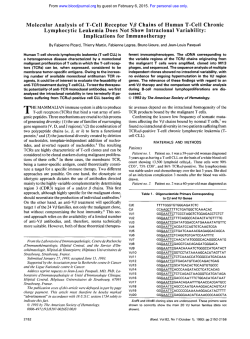
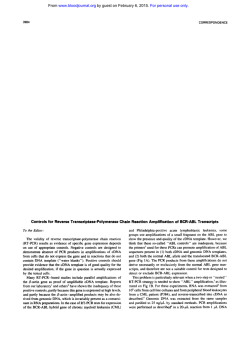
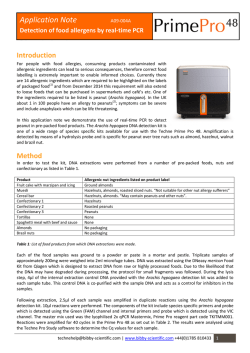
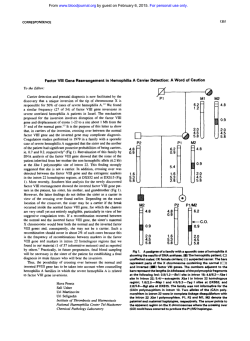
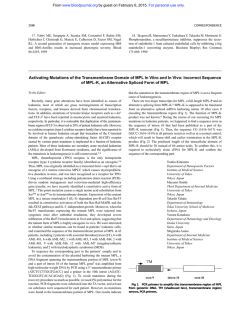
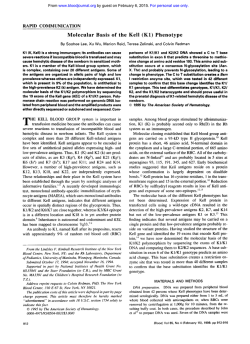
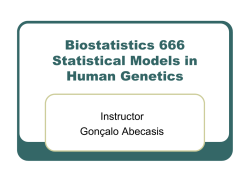

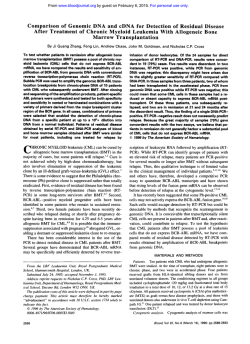
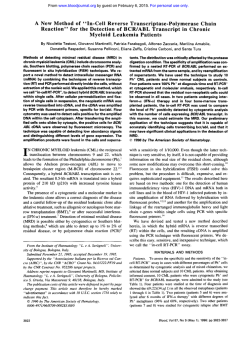
![Download [ PDF ] - journal of evolution of medical and dental sciences](http://s2.esdocs.com/store/data/000488959_1-4dca276881c4179da54bcce462126ef6-250x500.png)